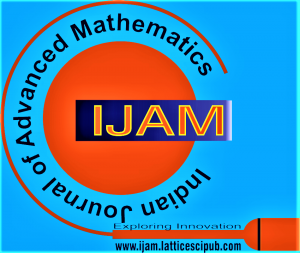![]()
Properties of Objects and Their Transformation on the Plane
Avelanda
Avelanda, Department of Mathematics, University of the Free State, Summerstrand, South Africa.
Manuscript received on 05 February 2024 | Revised Manuscript received on 17 February 2024 | Manuscript Accepted on 15 April 2024 | Manuscript published on 30 April 2024 | PP: 19-21 | Volume-4 Issue-1, April 2024 | Retrieval Number: 100.1/ijam.A116604010424 | DOI: 10.54105/ijam.A1166.04010424
Open Access | Editorial and Publishing Policies | Cite | Zenodo | OJS | Indexing and Abstracting
© The Authors. Published by Lattice Science Publication (LSP). This is an open-access article under the CC-BY-NC-ND license (http://creativecommons.org/licenses/by-nc-nd/4.0/)
Abstract: Every function has its properties relative to that of the mechanisms of a circle, since cycles repeat. Such that all equations factors so well within its definition, that clearly, every circle has a radius that is greater than zero. If the radius expands by any set of numbers, then it is undergoing transformation. Hence, every object under it expands at a certain ratio. To a point that it is quite natural for phenomena to repeat; given that it is within the area of its circumference. Although without events being the same. Functions tends to be in approximation with mathematical constants, merely for the periodicity of their behaviour- since it is cyclic under certain conditions. The centre of a black hole is a point; so much like that of a circle. Since therefore, objects alters the state of dimensions they occupy, so that relative to the point of reference: they either appear as paraboloids, ellipses, hyperbolas, or circles; depending on the context.
Keywords: Transformation, Objects, Hyperbolas
Scope of the Article: Discrete Mathematics
